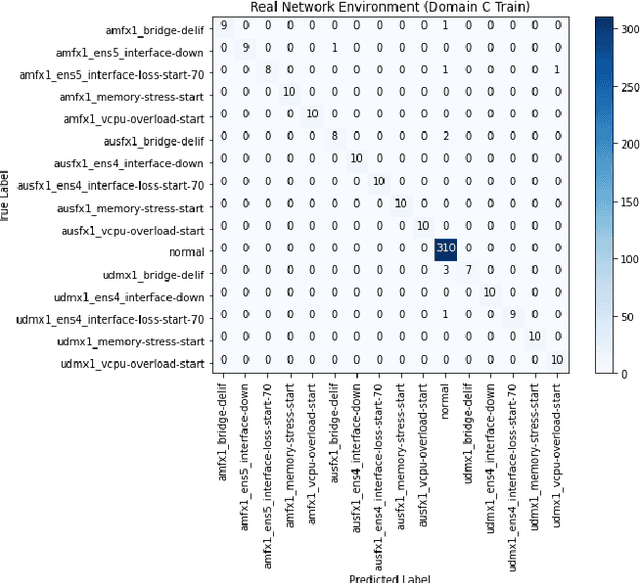Abubakar Isah
A GNN-based Spectral Filtering Mechanism for Imbalance Classification in Network Digital Twin
Feb 17, 2025Abstract:Graph Neural Networks are gaining attention in Fifth-Generation (5G) core network digital twins, which are data-driven complex systems with numerous components. Analyzing these data can be challenging due to rare failure types, leading to imbalanced classification in multiclass settings. Digital twins of 5G networks increasingly employ graph classification as the main method for identifying failure types. However, the skewed distribution of failure occurrences is a major class imbalance issue that prevents effective graph data mining. Previous studies have not sufficiently tackled this complex problem. In this paper, we propose Class-Fourier Graph Neural Network (CF-GNN) introduces a class-oriented spectral filtering mechanism that ensures precise classification by estimating a unique spectral filter for each class. We employ eigenvalue and eigenvector spectral filtering to capture and adapt to variations in the minority classes, ensuring accurate class-specific feature discrimination, and adept at graph representation learning for complex local structures among neighbors in an end-to-end setting. Extensive experiments have demonstrated that the proposed CF-GNN could help with both the creation of new techniques for enhancing classifiers and the investigation of the characteristics of the multi-class imbalanced data in a network digital twin system.
Beyond 5G Network Failure Classification for Network Digital Twin Using Graph Neural Network
Jun 06, 2024



Abstract:Fifth-generation (5G) core networks in network digital twins (NDTs) are complex systems with numerous components, generating considerable data. Analyzing these data can be challenging due to rare failure types, leading to imbalanced classes in multiclass classification. To address this problem, we propose a novel method of integrating a graph Fourier transform (GFT) into a message-passing neural network (MPNN) designed for NDTs. This approach transforms the data into a graph using the GFT to address class imbalance, whereas the MPNN extracts features and models dependencies between network components. This combined approach identifies failure types in real and simulated NDT environments, demonstrating its potential for accurate failure classification in 5G and beyond (B5G) networks. Moreover, the MPNN is adept at learning complex local structures among neighbors in an end-to-end setting. Extensive experiments have demonstrated that the proposed approach can identify failure types in three multiclass domain datasets at multiple failure points in real networks and NDT environments. The results demonstrate that the proposed GFT-MPNN can accurately classify network failures in B5G networks, especially when employed within NDTs to detect failure types.
Improving the Real-Data Driven Network Evaluation Model for Digital Twin Networks
May 14, 2024Abstract:With the emergence and proliferation of new forms of large-scale services such as smart homes, virtual reality/augmented reality, the increasingly complex networks are raising concerns about significant operational costs. As a result, the need for network management automation is emphasized, and Digital Twin Networks (DTN) technology is expected to become the foundation technology for autonomous networks. DTN has the advantage of being able to operate and system networks based on real-time collected data in a closed-loop system, and currently it is mainly designed for optimization scenarios. To improve network performance in optimization scenarios, it is necessary to select appropriate configurations and perform accurate performance evaluation based on real data. However, most network evaluation models currently use simulation data. Meanwhile, according to DTN standards documents, artificial intelligence (AI) models can ensure scalability, real-time performance, and accuracy in large-scale networks. Various AI research and standardization work is ongoing to optimize the use of DTN. When designing AI models, it is crucial to consider the characteristics of the data. This paper presents an autoencoder-based skip connected message passing neural network (AE-SMPN) as a network evaluation model using real network data. The model is created by utilizing graph neural network (GNN) with recurrent neural network (RNN) models to capture the spatiotemporal features of network data. Additionally, an AutoEncoder (AE) is employed to extract initial features. The neural network was trained using the real DTN dataset provided by the Barcelona Neural Networking Center (BNN-UPC), and the paper presents the analysis of the model structure along with experimental results.
 Add to Chrome
Add to Chrome Add to Firefox
Add to Firefox Add to Edge
Add to Edge